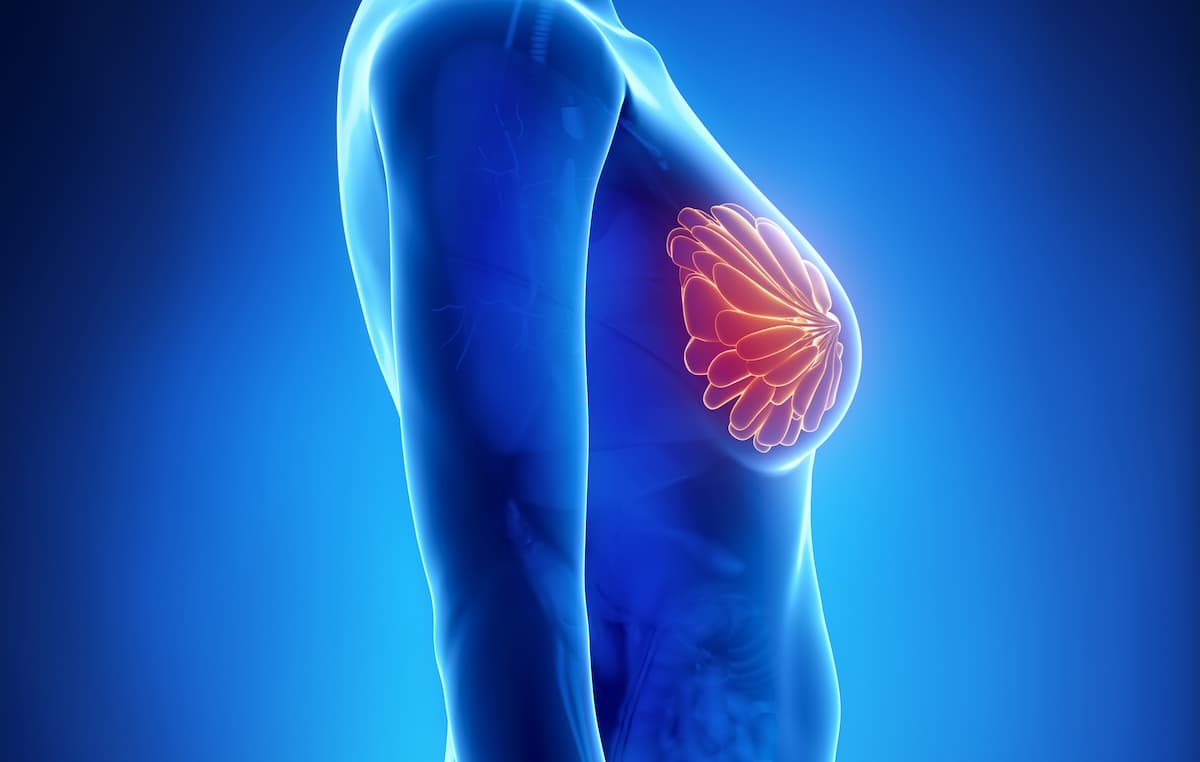Investigators Will Assess BDC-1001.S/Pertuzumab in HER2+ Breast Cancer
Preclinical research supports the rationale of combining a BDC-1001 surrogate with pertuzumab to target HER2-expressing tumors.
“Enrollment of the phase 2 study [NCT05954143] is ongoing in the United States, France, Italy, and Spain,” according to the study investigators.

Investigators will evaluate the anti-tumor activity of BDC-1001.S, an immune-stimulating antibody conjugate (ISAC), with or without pertuzumab (Perjeta) in patients with HER2-positive breast adenocarcinoma and other HER2-expressing cancers in a phase 2 trial (NCT05954143), according to data from a poster presented at 2023 San Antonio Breast Cancer Symposium (SABCS).1
“BDC-1001 was well tolerated in the phase 1 [NCT04278144] dose-escalation trial that enrolled patients with HER2-expressing solid tumors. Clinical activity was observed across different HER2-postive tumor types and in a heterogenous, heavily pretreated patient population: 29% response rate in HER2 evaluable HER2-postive tumors at the recommended phase 2 dose; multiple patients with long-term stable disease,” investigators reported in the poster.
The phase 2 trial is an open-label, multicenter study, and patients with HER2-positive metastatic breast cancer will be randomly assigned into 2 arms. The first arm will receive single agent BDC-1001 intravenously (IV) every 2 weeks at the arrived dose of 20 mg/kg, which was based on safety, clinical efficacy, and pharmacokinetics reported from the phase 1 trial. The second arm will receive the same dose of BDC-1001 IV every 2 weeks in combination with an 840 mg/420 mg dose of pertuzumab IV, which is administered every 3 weeks.
The primary end point of the trial is objective response rate according to RECIST v1.1. Secondary end points include, evaluating antitumor activity in response to the BCC-1001 with or without pertuzumab in regard to duration of response, disease control rate, progression-free survival, and overall survival as well as determining safety, tolerability, pharmacokinetics, and immunogenicity.
To be eligible for the phase 2 trial, patients with histologically confirmed HER2-postive breast adenocarcinoma must have been treated previously with trastuzumab deruxtecan (Enhertu) and at least 1 other prior anti-HER2 therapy. Prior neoadjuvant or adjuvant therapy that resulted in relapse within 12 months of completion of therapy will also be considered as a prior line of treatment. Patients must have an ECOG performance status of 0 or 1 and must agree to biopsy prior to enrollment in the trial unless the biopsy cannot be accessed safely or clinically feasibly.
Specific exclusions for eligibility are if the patient has a history of treatment with a TLR7, TLR8, or has received a TLR7/8 agonist within 12 months of enrollment. Patients with central nervous system metastases are eligible for the study unless the disease is asymptomatic, clinically stable, and hasn’t required steroid treatment for at least 28 days prior to starting the study treatment.
In order to assess whether there is a relationship between specific markers found in both the blood and tumor tissue before treatment and how BDC-1001, either alone or combined with pertuzumab, works against the tumor, tissue biopsies will be taken at baseline and after treatment. Pro-inflammatory cytokines and chemokines will also be evaluated as well as examining additional biomarkers in tumor tissue and blood related to tumor and immune biology. This involves analyzing gene expression, mutations, proteins, and tissue images to better understand the biological aspects of the tumor and immune system.
The decision to proceed with the phase 2 trial was based on data received from the phase 1 trial, focusing on dose-escalation for patients with HER2 breast cancer. Within phase 1, patients (n=131) with 16 various unspecified HER2 solid tumor expressions, received an increasing 0.5 to 20 mg/kg dose of BDC-1001. The treatment was tolerated as both a monotherapy and when combined with nivolumab, and all patients showed clinical activity across different HER2-postive tumor types in both the heterogenous and heavily treated patient population.
Preclinical research shows that combining a surrogate of BDC-1001 with pertuzumab improves the effectiveness against various HER2-expressing tumor models. This forms the basis for considering the combination therapy of BDC-1001 and pertuzumab.With the addition of pertuzumab, the agent attaches to a different location on the HER2 tumor and boosts the quantity of antibodies attached to the tumor cell surface. This amplifies Fc clustering, leading to a rise in Fc receptor-mediated phagocytosis.1,2
“Enrollment of the phase 2 study is ongoing in the United States, France, Italy, and Spain,” investigators stated in the poster.1
References
- Pegram M, Calfa C, Chen C, et al. Phase 2 study of novel HER2-targeting, TLR7/8 immune-stimulating antibody conjugate (ISAC) BDC-1001 +/- pertuzumab in patients with HER2-positive metastatic breast cancer (MBC) previously treated with trastuzumab deruxtecan. Presented at the 2023 San Antonio Breast Cancer Symposium; San Antonio, TX; December 5-8, 2023. PO1-20-06
- Pearson CI, Luo A, Henning KA, et al. 821 The combination of a trastuzumab ISAC and pertuzumab augments anti-tumor efficacy in multiple HER2+ tumor models relative to trastuzumab plus pertuzumab. Journal for ImmunoTherapy of Cancer. 2023;11(Suppl 1). doi:https://doi.org/10.1136/jitc-2023-SITC2023.0821
Newsletter
Stay up to date on recent advances in the multidisciplinary approach to cancer.